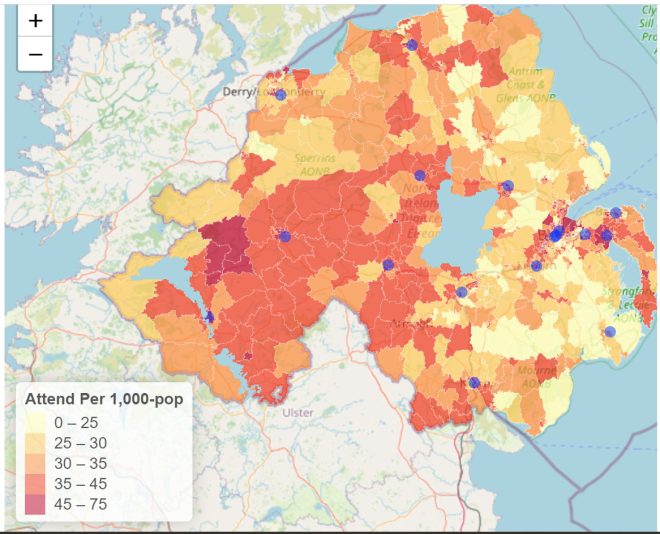New figures released by the Department of Health show that every two days for the last ten years someone presenting to the South West Acute Hospital (SWAH) required ‘immediate’ surgery.
Immediate surgery is when surgical intervention is needed within minutes of a decision to operate, in order to save life, limb or organ.
Health campaign group Save Our Acute Services (SOAS) have said the figures on theatre utilisation – which you can find here, along with the Department’s definition of immediate surgery – show the “full scale of the need for urgent and emergency surgery” at the Enniskillen hospital, where the emergency general surgery service (EGS) has been suspended indefinitely.
The group has also noted the numbers needing immediate surgery at the SWAH in the period of 2022-2023 were twice those in Altnagelvin over the same period – 135 compared to 68 respectively.
The table shows that in the last ten years, 1,644 people needed immediate surgery at the SWAH, compared to 928 at Altnagelvin. This is equivalent to 3.2 patients a week.
SOAS spokesman Donal O’Cofaigh said the figures contradicted claims made by the Western Trust regarding the suspension of SWAH EGS.
“Previously our campaign team revealed that the decision by the Western Trust to remove urgent and emergency surgery from SWAH will leave more than 83,000 people living here being left outside the ‘golden hour’,” said Mr O’Cofaigh. “In response, the experts of the Western Trust said that the golden hour is outdated.
“We now see that Dept of Health’s own definition of ‘immediate surgery’ requires intervention within minutes of the decision to operate. These statistics confirm not just that there is a special category of immediate surgery but that there are hugely disproportionate numbers in the SWAH catchment area.”
Mr O’Cofaigh said SOAS believed the disparity between the SWAH and Altnagelvin figures showed people in this area were “more likely to have accidents or injuries requiring immediate surgical response.”
“This likely reflects the size of the agricultural and industrial sectors here, the poor roads infrastructure and high levels of deprivation,” he said.
“These statistics provide a clear and undeniable case for the full restoration of urgent and emergency surgery at SWAH.
“Almost every two days for the last ten years, someone has presented to SWAH needing immediate surgery to save their life, limb or organ. No urgent or emergency surgery means no hope. This is just not acceptable.”
The Western Trust has been contacted for comment on these figures.
Meanwhile, SOAS has also published a ‘heat map’ using figures from NISRA, showing a breakdown of ED attendances across the North, which you can view below.
Mr O’Cofaigh noted it showed ED attendances were highest in Fermanagh and south Tyrone, both from towns and rural areas. He also noted it showed fewer attendances from border areas, indicating those living in border areas were being forced to travel south to emergency departments.
“These figures are further evidence why the Department of Health must now intervene above the heads of the Western Trust and signal their intent to restore urgent and emergency surgery at SWAH,” he said.










